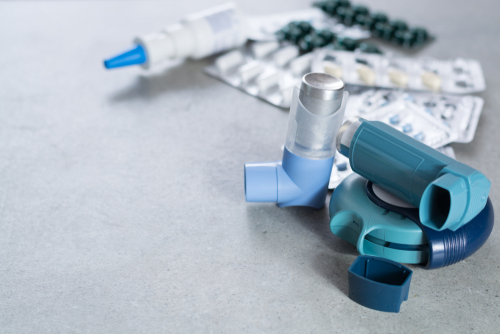Spirometry After Bronchodilator Treatment Improves Diagnosis Accuracy, Study Shows

Routine evaluation of respiratory function through spirometry after treatment with bronchodilator medicines can help improve diagnosis accuracy for chronic obstructive pulmonary disease (COPD), preventing approximately 39% of overdiagnosis, a new study suggests.
Researchers from the University of Kentucky College of Medicine found that using such an assessment can also help identify patients who have asthma or asthma-COPD overlap syndrome (ACOS).
The findings were discussed at the CHEST Annual Meeting 2019, held Oct. 19-23 in New Orleans, during the oral presentation “Role of Bronchodilator Testing in Identifying COPD, Asthma, and Asthma-COPD Overlap Syndrome: NHANES III Analysis.”
Asthma and COPD are distinct chronic pulmonary disorders that share many features, but require different clinical management.
While asthma-associated difficulty breathing results from an immune reaction to an aggressive agent that can be reversed by treatment, COPD is not reversible and is characterized by progressive damage of lung’s alveoli, commonly known as the lung air sacs, where gas exchanges occur.
Given the similar manifestations of these two diseases, it is often difficult for clinicians to differentiate them. In addition, some patients may experience symptoms of both diseases — a condition called ACOS.
Despite current diagnosis guidelines recommending the use of spirometry together with bronchodilator (BD) testing in routine clinical practice, researchers found that this approach is not commonly used.
In order to determine the role of bronchodilator testing in avoiding COPD overdiagnosis, researchers evaluated clinical data collected between 2007 and 2013 from 8,002 participants of the Third National Health and Nutrition Examination Survey (NHANES III).
Among these patients, 625 met the criteria for having an airway obstruction condition, based on a ratio value lower than 0.7 between forced expiration in one second (FEV1) and forced vital capacity (FVC) — two measures of lung function.
However, when these spirometry parameters were assessed together with bronchodilator testing, only 61% of these patients (381 patients) showed irreversible airway obstruction, meaning that 39% of them were misdiagnosed as having COPD.
“Not performing [bronchodilator] testing routinely, and relying on pre-BD FEV1/FVC ratio will lead to COPD overdiagnosis in 40% of subjects,” Srinadh Annangi, MD, lead author of the study from the University of Kentucky School of Medicine, said in a press release.
Among these 381 patients with confirmed COPD, 7.9% showed signs of likely ACOS according to the American Thoracic Society diagnosis criteria, and 19% fulfilled the modified Spanish Society of Pneumology and Thoracic Surgery criteria.
In contrast, those whose COPD diagnosis was not confirmed were found to most likely have asthma, as seen by their symptoms’ reversal after bronchodilator treatment, and by the presence of high levels in the blood of eosinophils – immune cells involved in the allergic reaction that characterizes asthma.
“This well-designed study clearly demonstrates the importance of spirometry with the use of bronchodilators to identify COPD as well as asthma and overlap syndromes,” said Victor Test, MD, co-chair of the CHEST scientific program committee and professor of Texas Tech University Health Sciences Center. “It once again emphasizes the importance of pulmonary physiological testing when obstructive lung disease is a possibility.”
Overall, the results demonstrated that “routine underutilization of spirometry with bronchodilator testing may lead to overdiagnose 39% of subjects as having COPD,” the researchers stated.
“Routine use of post-bronchodilator spirometry values will not only prevent overdiagnosis of COPD, but also help identifying subjects with potential ACOS and asthma,” the team concluded.






